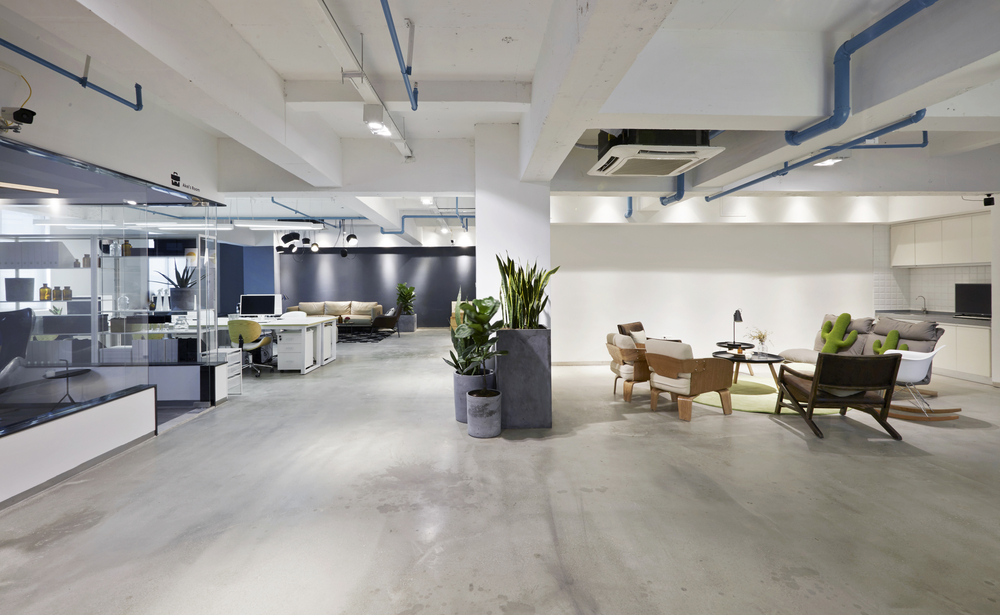
An innovative research project has found simple changes to ventilation systems can significantly decrease the transmission of COVID-19 and reduce energy consumption in office buildings.
The City of Melbourne BREATH pilot tested and evaluated three different ventilation systems in a vacant CBD building over three months: displacement ventilation air conditioning, in-ceiling air filters and natural airflow through open windows.
Acting Lord Mayor Nicholas Reece said the research has identified simple but effective changes that can be implemented in office buildings to help workers feel safe, comfortable and protected.
“The research findings are publicly available online and free for any organisation to access. We encourage building owners, tenants and partners to take them on board, and to help us create more healthy and sustainable workspaces in the CBD.”
The project found:
- All three ventilation systems reduced the potential transmission of airborne viruses when compared to standard ceiling-based air conditioning, improving safety for office workers.
- Displacement ventilation air conditioning – which supplies air from floor level – was the most effective and energy efficient system tested, reducing COVID-19 transmission by 83 per cent, while also reducing energy consumption by 20 per cent.
- Displacement ventilation is the most expensive to install, but there are no additional ongoing maintenance costs.
- In-ceiling air filters reduced virus transmission by 49 per cent but resulted in a minor increase in energy consumption.
- Opening windows reduced virus transmission by 53 per cent, but increased energy use by up to 20 per cent with seasonal temperature variations.
- Opening windows is not available to all office buildings and is not a viable solution due to Melbourne’s climate.
The BREATH project was led by City of Melbourne and delivered in partnership with Cbus Property, University of Melbourne amongst others.
Sustainable Building portfolio lead Councillor Elizabeth Doidge said the research can benefit businesses by helping to reduce their environmental footprint and operating costs.
“We’re committed to working closely with our partners and will continue to support the creation of buildings that are more sustainable for our environment and for the future of our city, its businesses and its people.”
The University of Melbourne Professor of Fluid Mechanics and Head of Mechanical Engineering, Jason Monty said BREATH has provided the knowledge to predict the best type of retrofit to simultaneously reduce carbon footprint and infectious disease transmission.
“Since the majority of city energy cost goes to ventilation of our buildings, the outcomes from BREATH will improve our ability to reach net zero carbon faster.”
Cbus Property’s Chief Executive Officer, Adrian Pozzo said the research project used their building at 423 Bourke Street, Melbourne, which has been earmarked for redevelopment, so they can better understand how to keep tenants safer by increasing levels of fresh air in the workplace.
“One of the key challenges with enhancing indoor air quality and mitigating potential transmission of airborne viruses such as COVID-19, is to balance that with energy performance of our buildings.
“As Australia’s highest environmentally performing sustainable office portfolio in the NABERS Sustainable Portfolios index for the past three years, we are particularly interested in trying to overcome this challenge, which is why we have partnered with the City of Melbourne and the University of Melbourne to pilot these technologies.”
BREATH project key outcomes
| System | Impact on transmission | Installation cost per m2 | Energy use – cost per m2 | Changes to energy use and NABERS |
| Opening windows, standarding heating, ventilation and air conditioning operations | Approximately 53% less infections
|
Nil
|
Costs $6/m2 per year
|
10-20% increase in energy use, loss of up to ½ NABERS star
|
| In-ceiling air cleaner, HEPA filtration units
|
Approximately 49% less infections
|
$28m2 with maintenance costs of $1.5 – $3m2 per year
|
Saves $4.21/m2 per year
|
2% increase in energy use, no impact on NABERS
|
| Displacement ventilation air conditioning
|
Approximately 83% less infections
|
$170m2 with no additional ongoing maintenance costs
|
Saves $10.67/m2 per year
|
10-20% reduction in energy use, addition of up to ½ NABERS star
|
*NABERS is a simple, reliable sustainability rating for the built environment, which measures buildings’ efficiency across energy, water, waste and the indoor environment. NABERS provides a rating from one (making a start) to six (market leading) stars.








